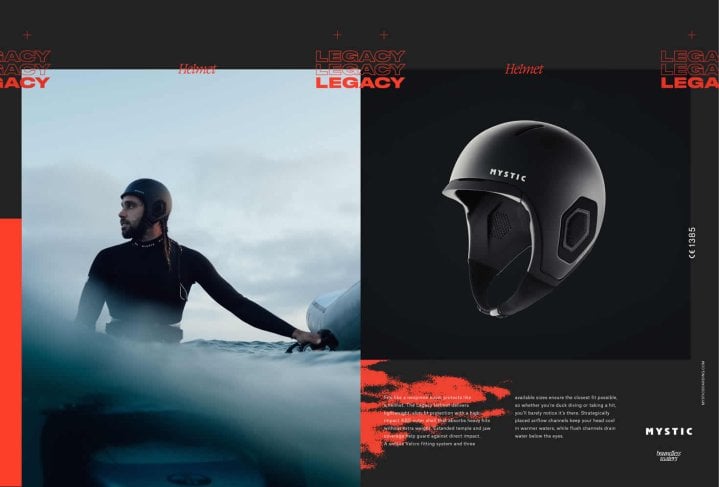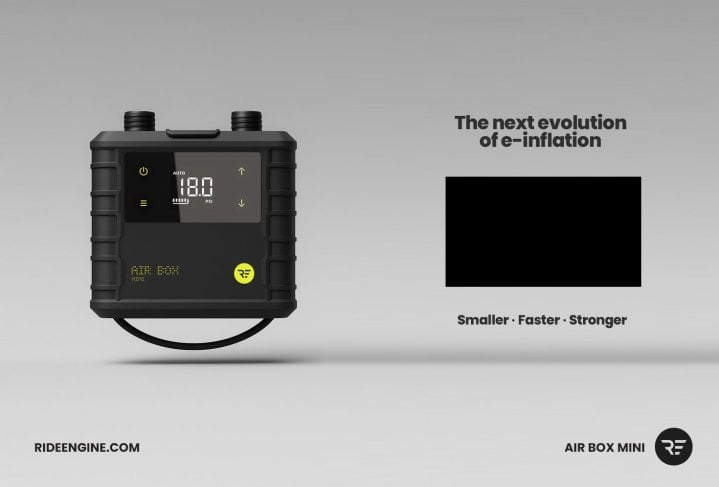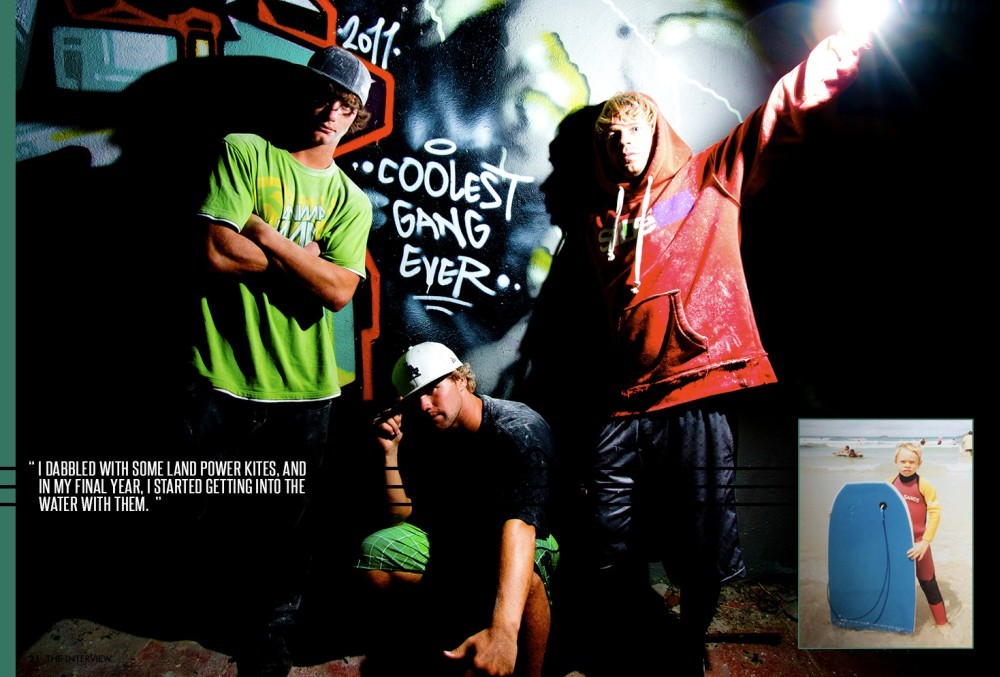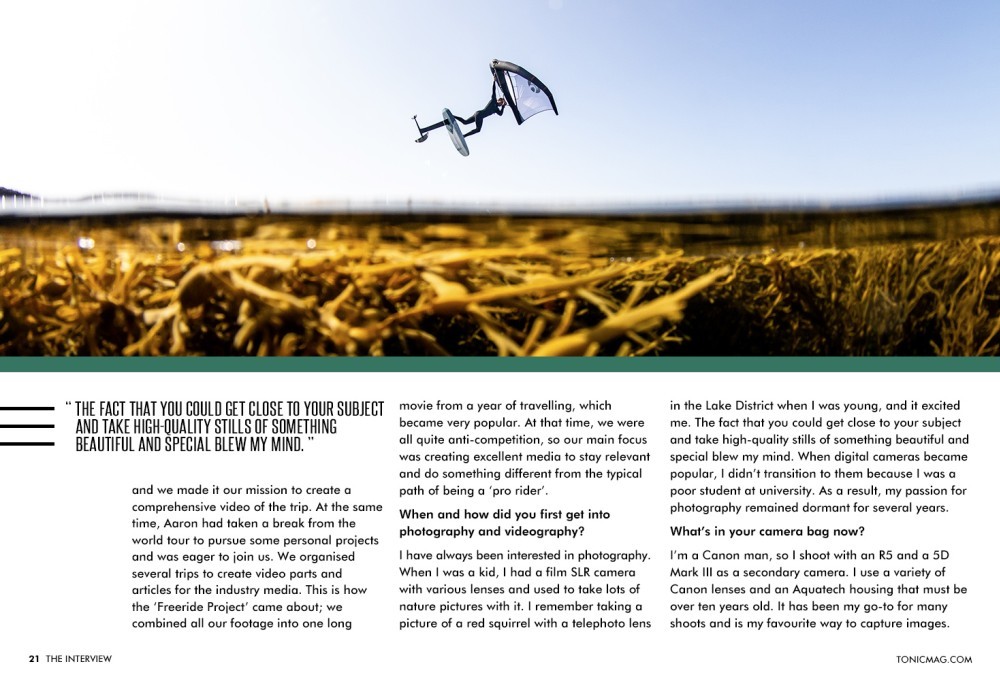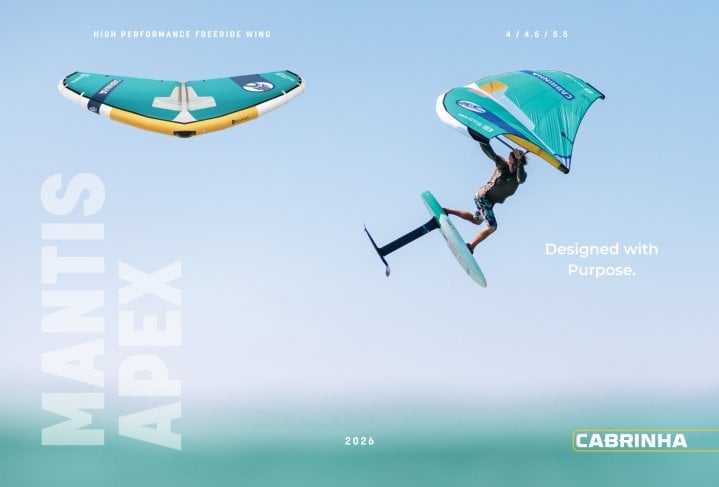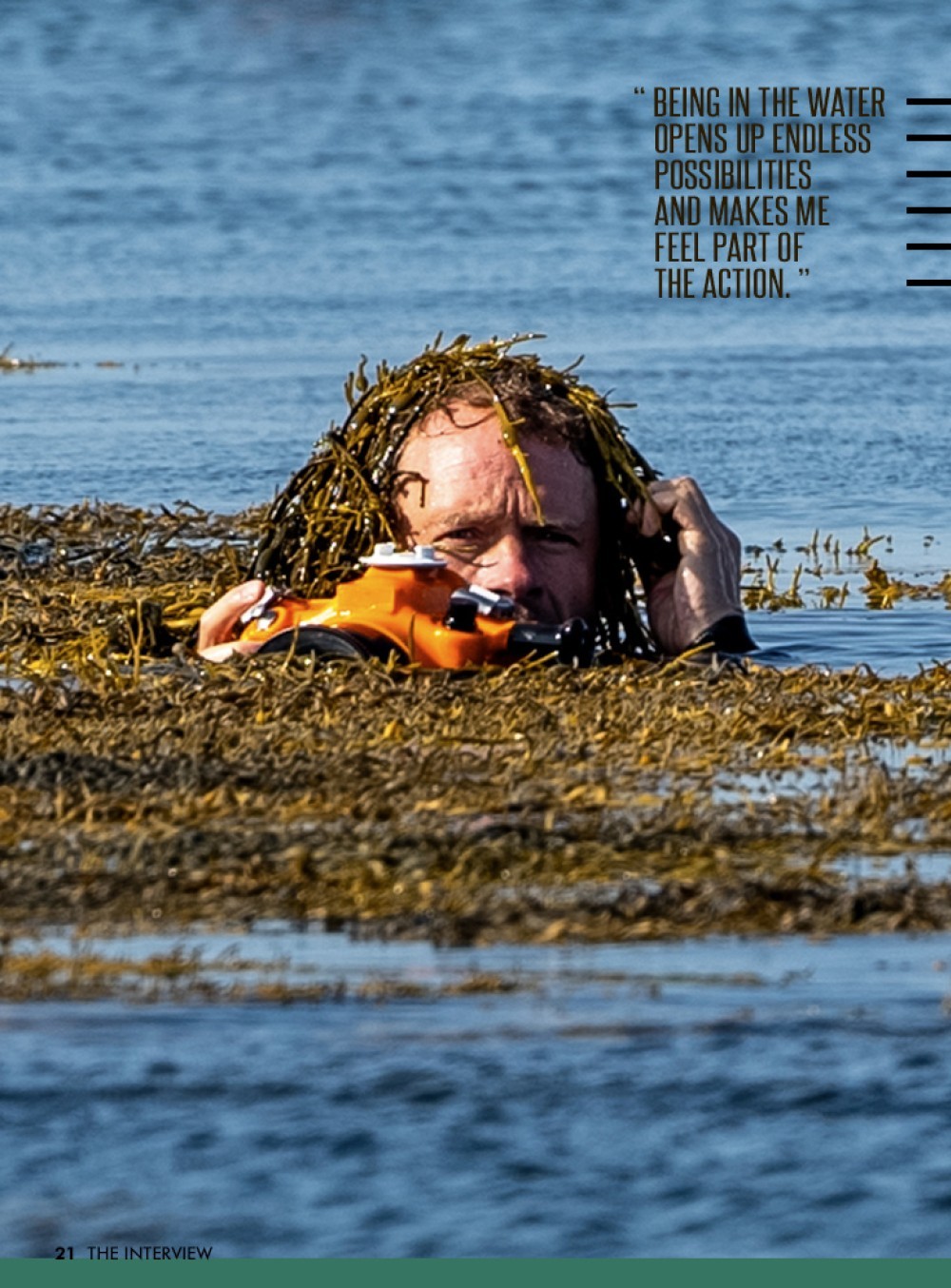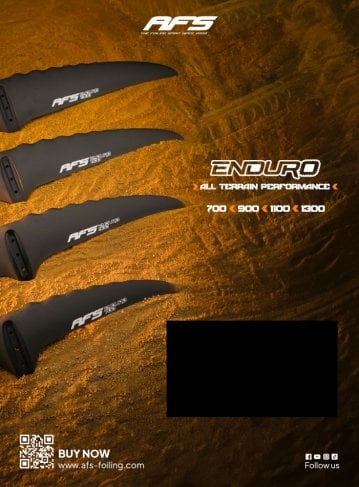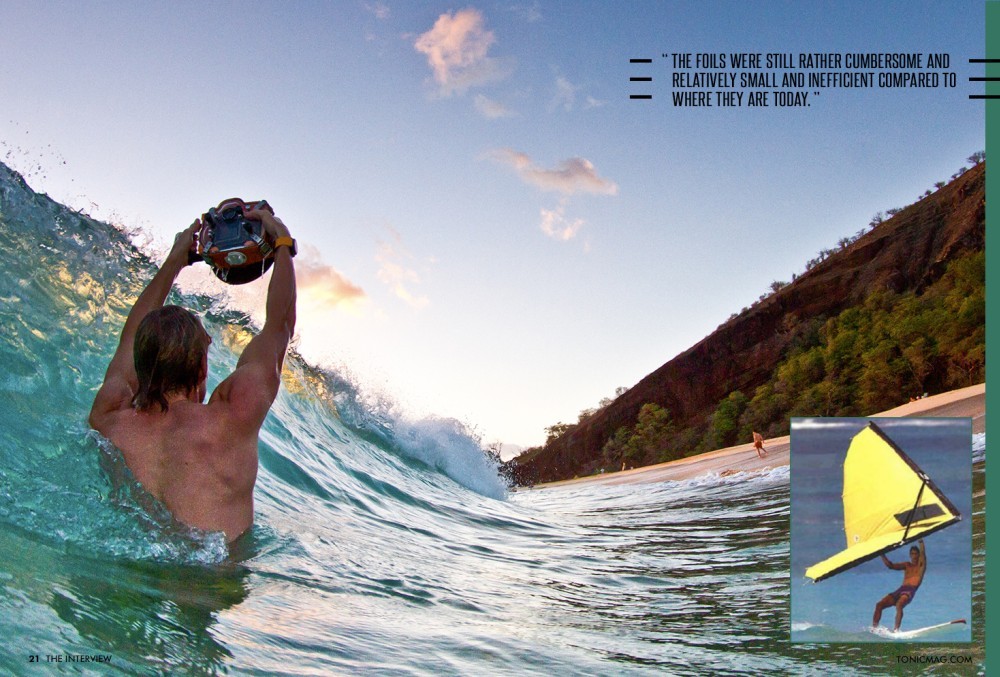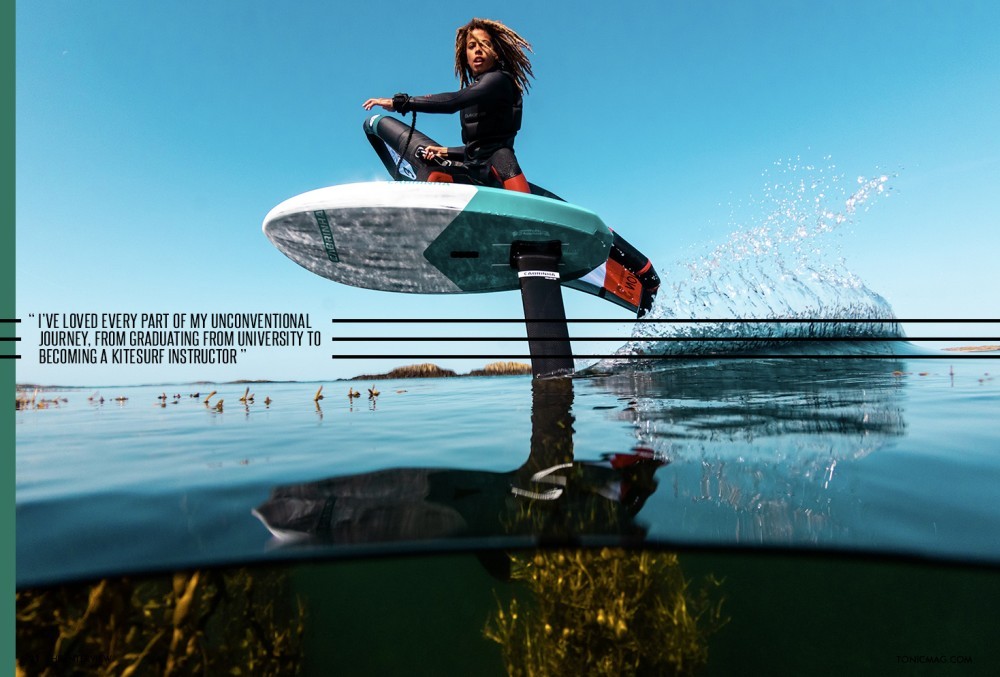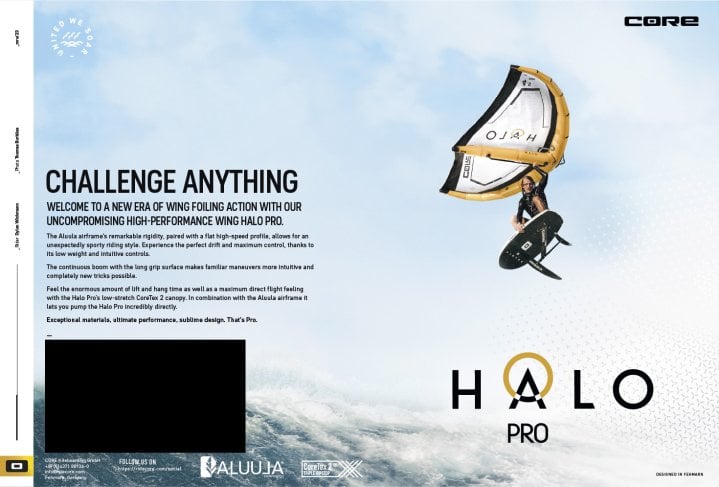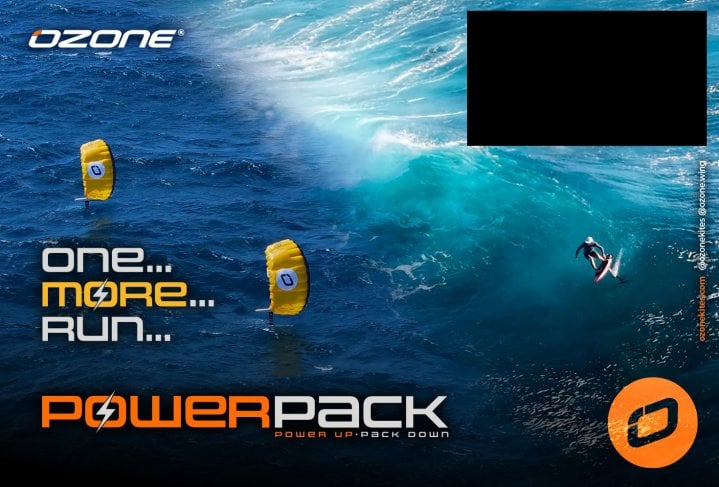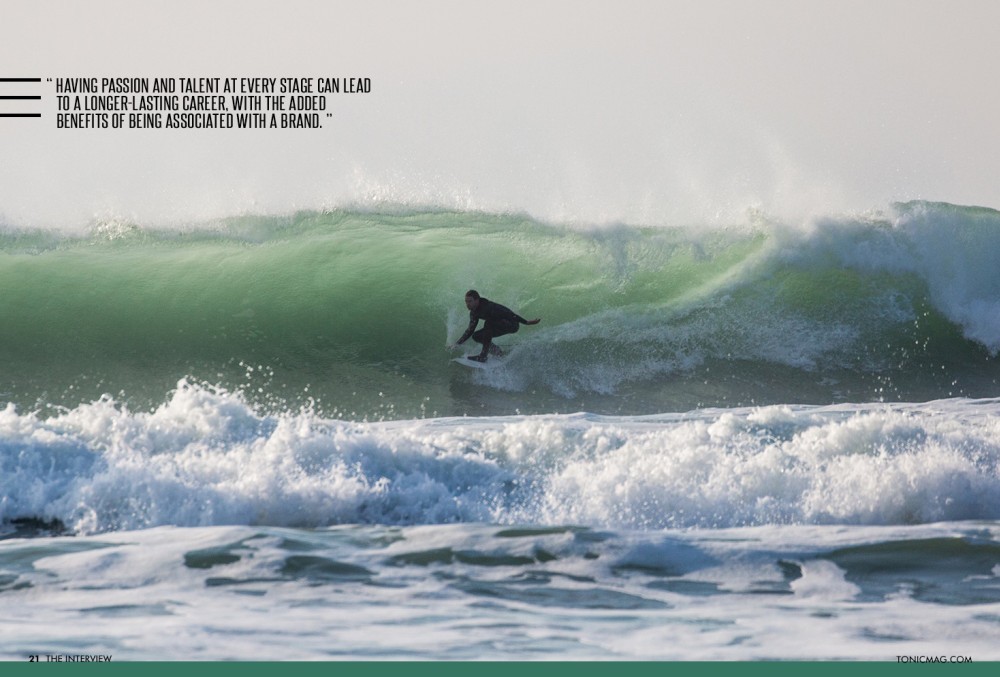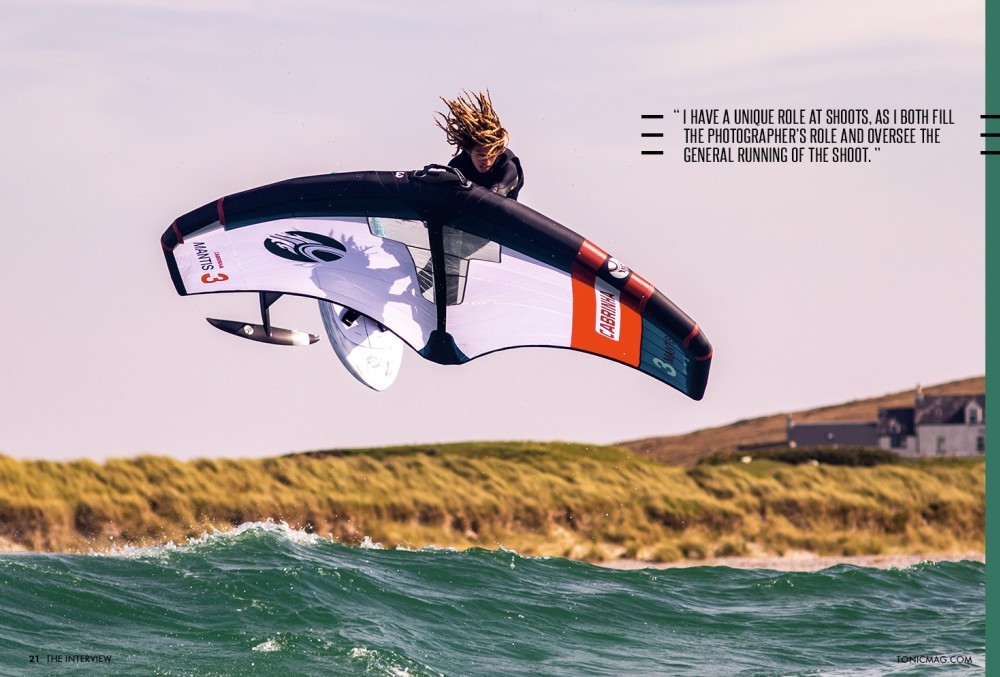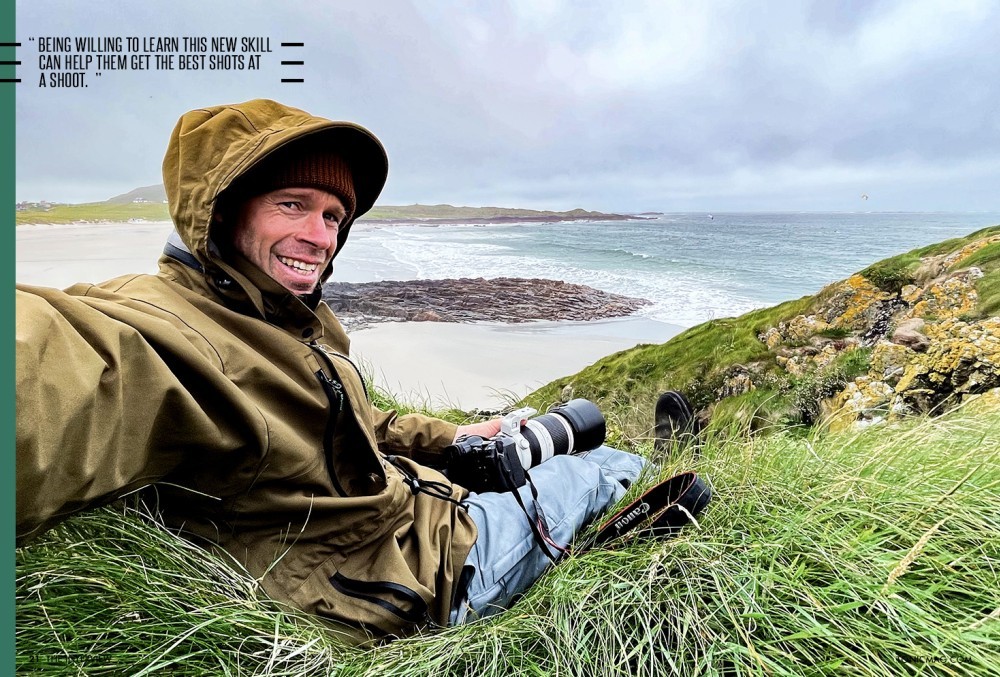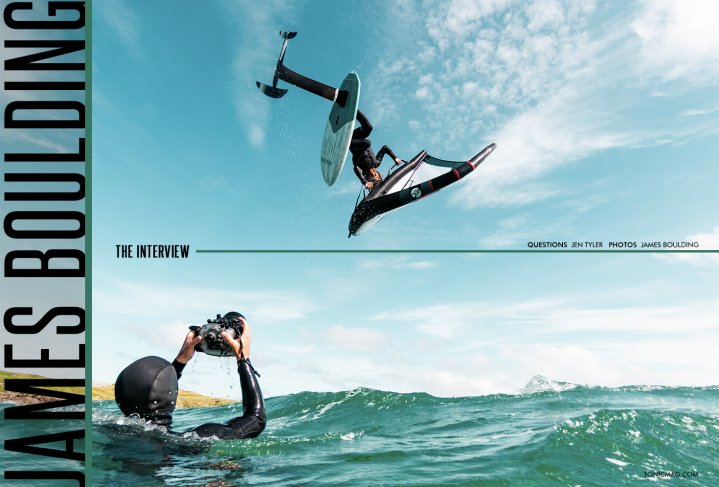
The Interview - James Boulding
Issue 21 / Tue 20th Aug, 2024
James Boulding has been on the kiteboarding scene for a long time, and today, he shares his journey from Manchester’s suburbs to the heart of the global watersports scene, his insights on the evolution of wingfoiling, and what it takes to make waves both on the water and behind the camera. Find out more in this issue’s The Interview.
James, it’s great to have you here! Let’s start from the beginning: where did you grow up, and how did you first get into watersports?
I grew up in the North-West of England, in the suburbs of Manchester. I didn’t get into watersports until around the age of 17. Before that, my life was all about studying and, in my spare time, playing various winter and summer team sports. My side passion throughout all this was climbing, which gave me my first doses of adrenaline. Towards the end of school, I dabbled with some land power kites, and in my final year, I started getting into the water with them. The industry was still relatively young, and at the coast, you’d find more land-based kiting than water activities, but I knew that was where I wanted to go. After finishing school, I went to university on the North East coast, where I caught the kitesurfing bug. The conditions were often rough, and the temperatures weren’t too helpful, but I loved the community and spirit there, and I’m still very much in touch with the friends I met in the early days. Upon graduation, I was very much burnt out with studying. I couldn’t bear the thought of going straight into a career in finance or accounting, so I took a watersports instructor’s job in Egypt, and the rest is history!
You became a pro kitesurfer quite quickly and made many films with riders like Aaron Hadlow, Sam Light, and Tom Court; how did that come about, and what did you learn from those early experiences?
Sometimes, things fall into place. I had decided to spend the winter in Australia with my friends Sam and Tom, and we made it our mission to create a comprehensive video of the trip. At the same time, Aaron had taken a break from the world tour to pursue some personal projects and was eager to join us. We organised several trips to create video parts and articles for the industry media. This is how the ‘Freeride Project’ came about; we combined all our footage into one long movie from a year of travelling, which became very popular. At that time, we were all quite anti-competition, so our main focus was creating excellent media to stay relevant and do something different from the typical path of being a ‘pro rider’.
When and how did you first get into photography and videography?
I have always been interested in photography. When I was a kid, I had a film SLR camera with various lenses and used to take lots of nature pictures with it. I remember taking a picture of a red squirrel with a telephoto lens in the Lake District when I was young, and it excited me. The fact that you could get close to your subject and take high-quality stills of something beautiful and special blew my mind. When digital cameras became popular, I didn’t transition to them because I was a poor student at university. As a result, my passion for photography remained dormant for several years.
What’s in your camera bag now?
I’m a Canon man, so I shoot with an R5 and a 5D Mark III as a secondary camera. I use a variety of Canon lenses and an Aquatech housing that must be over ten years old. It has been my go-to for many shoots and is my favourite way to capture images. Being in the water opens up endless possibilities and makes me feel part of the action. I particularly enjoy shooting in waves as it’s challenging and gives me the same adrenaline rush as surfing. Capturing a good shot in these conditions is incredibly rewarding, as everything happens quickly, and you must be on your toes.
Please tell us about your role as a Marketing Manager at Cabrinha.
My role at Cabrinha involves both organisational and creative tasks. I work with the sales team to execute the marketing plan, which includes advertising, website maintenance, social media management, photoshoots, product launches, promotions, events, and consumer communication. I also handle product graphics and print materials. I enjoy the variety of skills I use as part of our small team. The best part of my job is the people I work with. I’ve been with Cabrinha for over ten years and have built excellent working relationships and friendships with many staff members. I’ve enjoyed watching their kids grow up and have made fantastic memories working alongside talented individuals during our trips.
What is the most challenging part of your job?
Meeting deadlines can be challenging and add extra stress. Product marketing is often the final piece of the puzzle before a launch, so that time pressures can occur. However, it’s also gratifying. Some of the proudest moments are when a product collection goes live and the public interacts with something we’ve been working on behind the scenes for a few years.
How have you seen wingfoiling evolve over the years, and what trends do you foresee shaping its future?
I remember very early on in the sport’s inception, being on Maui and working on a new kite collection, when Pete (Cabrinha) came into the office and was excited about the potential. He’d been dabbling with some early prototypes, and it clicked on the water with the foil. The foils were still rather cumbersome and relatively small and inefficient compared to where they are today. I must be honest; I was still quite uncertain at that point. I could see its application in the waves, but recreationally, I wasn’t sure. Pete had his finger on the pulse, and it quickly dawned on us what potential there was for this as a stand-alone sport.
Since then, the industry has moved at lightning speed, with foil development supercharging what is possible. It’s cool to see the different disciplines developing and riders pushing their signature styles in all conditions. The youth always play a key role in sports development, so I love seeing the youngsters charging on the freestyle side. Combining big air, freestyle and waves in one progressive package showcases the best wing foiling, and events like the one in Cape Verde showed signs of what the future may hold. As a brand, working with talented riders as they forge their way in a fast-changing industry is awesome. Each new iteration of equipment seems to unlock new tricks and combos or aid in riding larger, faster, hollower waves.
Who is the most talented wingfoiler, in your opinion?
Over the last few years, I’ve enjoyed working with some amazing athletes at the forefront of wingfoiling. I love the style and power of Titouan Galea charging in big waves, complimented by the raw talent of Benji Castenskiold, who just loves every second of being in the water trying new freestyle tricks. They both have the power to help grow the sport and entice a wider range of people to give it a go.
Looking back on your career, what are your proudest moments on the water and behind the camera?
I’m not sure if it’s my age or just a bad memory, but nothing stands out. I’ve loved every part of my unconventional journey, from graduating from university to becoming a kitesurf instructor and everything in between. I think the whole journey is what I’m most proud of. I remember looking at a poster at the university that showed what Maths graduates went on to do after they left university. Oddly enough, nothing was anything like what I ended up doing! I’ve taken many pictures that I love, but what I cherish most are the memories of each session that a picture was taken during, the moments in the water with the riders trying to create something unique or special.
What advice would you give people thinking about becoming a pro rider, and how does someone grab your attention these days?
There are many ways to establish a career in the watersports industry. I encourage young watersports enthusiasts to consider various roles beyond becoming a professional rider or an influencer, as only a small percentage can make a good living from those paths. These roles can also be quite unstable during industry fluctuations. Many career paths are available, from instructors and sales agents to product development. Having passion and talent at every stage can lead to a longer-lasting career, with the added benefits of being associated with a brand. There are many strategies to gain attention, but reaching out via Instagram direct messages or texting on a Sunday night for free gear is at the bottom of the list!
Establishing a solid relationship with a brand can open up many opportunities. Being adaptable to a brand’s needs is also essential. For every brand, selling products is crucial, so demonstrating how you can contribute to their sales and making it easy for them to track your impact is key. It’s a win-win situation that leads to a healthy and beneficial partnership for everyone!
What makes a good pro rider, in your opinion?
People often ask me this, and I always say, “Be more like Alby!”. Alberto Rondina has had a long career in the sport, and he’s carved out a great life, starting as a pro rider and diversifying himself through the sales agent route to running a successful kite station in Sicily. He is still probably one of the most talented, all-rounded athletes I know. He understands the ins and outs of how to get great shots at a photo shoot and can ride any discipline on a kite/wing/surfboard at a very high level. He’s also exceptionally hard-working and willing to do anything that needs doing with zero ego. I would urge any up-and-coming pro rider to study this blueprint in detail as it will certainly help their chances of a long and successful career in the industry.
You’ve organised lots of photo shoots over the years. What do you expect from a rider on these occasions?
Being on a shoot is not just about being a skilled rider, but also about working as part of a team and taking on any necessary role at any given moment. Days can be long as we strive to capture the perfect light and conditions, so it may involve tasks like preparing dinner, doing the dishes, or holding the flash during a night shoot. I have a unique role at shoots, as I both fill the photographer’s role and oversee the general running of the shoot. This often means needing more help from the team with setting up gear and swapping riders in and out. I seem to have coined the slogan ‘This isn’t a holiday!’ as I’ve said it numerous times to more than one team rider during their first photo shoot in recent years. Hard work and a good attitude go a long way! The best team riders understand what’s expected and what it takes to be successful in these environments.
It’s rare for the best riders to understand what makes the perfect photo or video clip, so being willing to learn this new skill can help them get the best shots at a shoot. Doing a trick in the wrong spot, no matter how good it is, will ultimately lead to it not being used.
In an exciting update, there’s a possibility that Cabrinha Chair Jon Modica might make an appearance in our next shoot; we’ll see how he deals with some whip-cracking!
What is the best piece of advice you’ve ever received?
Stay humble and work hard!
Videos
By Jen Tyler
Italian/Egyptian Jen Tyler grew up on the sandy beaches of the Red Sea and has been on the IKSURFMAG & Tonic Mag team since 2017.


